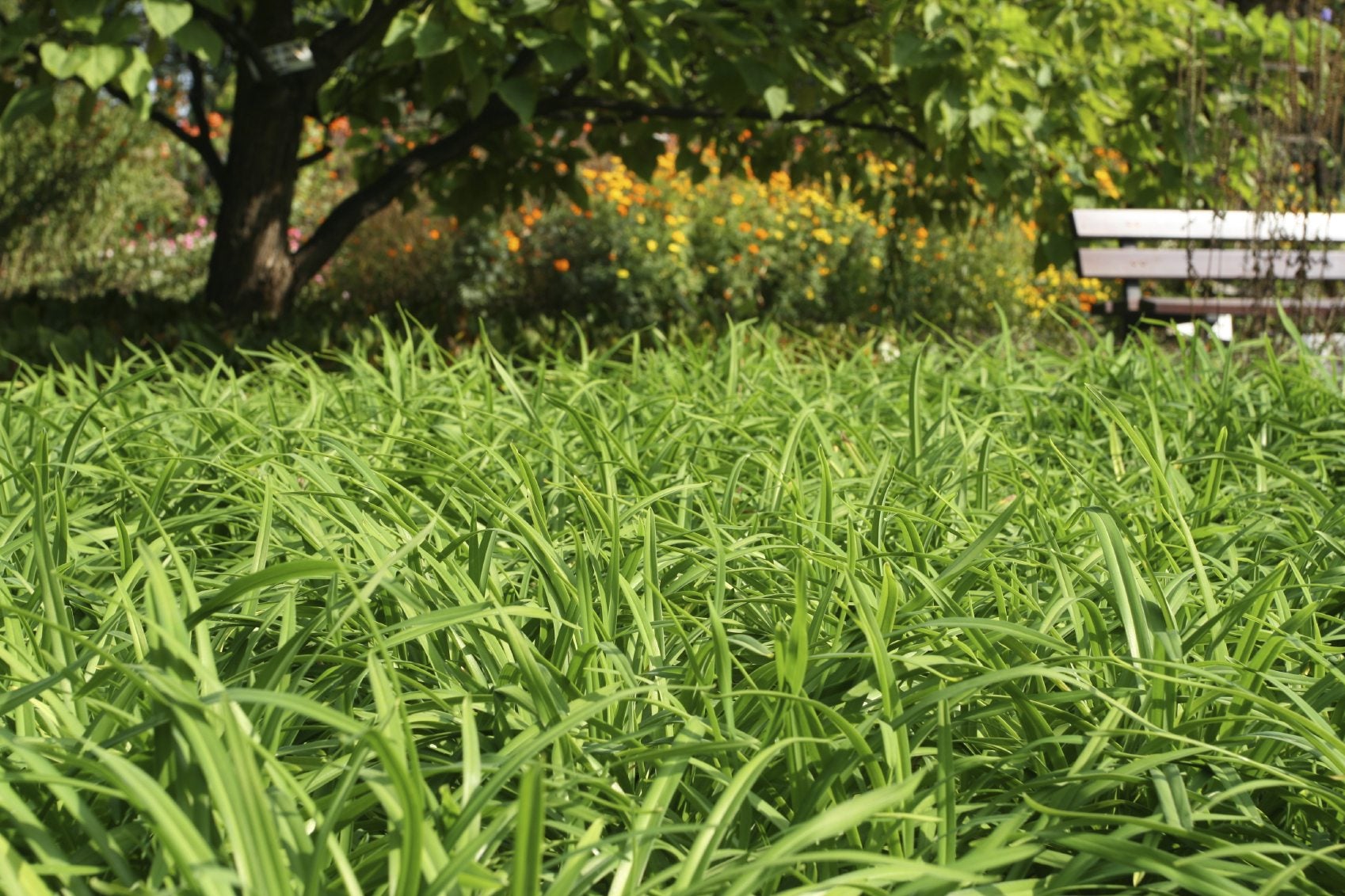Sedge Lawn Substitute: Tips For Growing Native Sedge Lawns


If you are looking for a water miser of a plant to save on those summer utility bills, look no further than sedge. A sedge grass lawn uses a lot less water than turf grass and is adaptable to many sites and climates. There are numerous species in the Carex family that work beautifully as a sedge lawn alternative. Sedge as a lawn is lush with color and movement, and its low maintenance. It might be the perfect plant for a minimalist approach to gardening, yet with visual appeal and hardworking toughness.
Using Sedge as Lawn
It's time to look outside the box on landscaping and veer away from the old tried and true. Sedge lawn substitute brings a modern, yet natural, touch to the garden. Adding to that is the ease of care and lazy man's upkeep, and sedge is a winning plant for lawns and other spaces. There are dozens of varieties from which to choose, many of which are native to North America. Native sedge lawns are instantly adaptable to your garden and hardy to the environment. Traditional grass lawns are wonderful places to play croquet, roll on, and picnic in the sun. With these delightful pastimes also comes mowing, edging, weeding, feeding, aerating, and thatching. That's a lot of work for a plant. If you are seeking an alternative to all that upkeep, try low growing sedge plants to fill in the space and transform it into a living, moving plantscape. They can offer a prairie or dune look, Mediterranean or even exotic landscape texture. A sedge grass lawn has it all in a versatile package.
Choosing a Sedge Lawn Substitute
First up you need to choose your plants. In order to mimic the feel of a lawn, you should pick low growing plants; but if you are feeling crazy, you can certainly mix it up. Most of the sedges grow in a clumping habit. Some great sedge lawn alternatives to replace traditional turf might be:
- Carex tumulicola
- Carex praegracillis
- Carex pansa
Each of these first three gets less than 18 inches (46 cm.) tall with C. pansa and praegracillis at only 6 to 8 inches (15-20 cm.) tall in a compact clump.
- Carex flagellifera is a foot (31 cm.) or more in height.
- Tussok sedge (C. stricta) is a sweet little 1 by 2 foot (31 x 61 cm.) plant with deep green delicate blades.
- Carex albicans spreads by rhizomes which will quickly fill in a planting bed or lawn area, seamlessly creating a carpet of white tinged foliage.
Check with your local extension office or garden center for specimens they recommend that are suited for your region.
Installing Sedge as Lawn
As with any project, start with a well prepared space. Loosen the soil to at least 6 inches (15 cm.) and then rake it free of rocks, roots, and other debris. Make sure you have superior drainage. Sedge plants can tolerate drought conditions but they prefer moderate moisture for best growth. What they really hate is wet feet. If necessary, work in some grit to help enhance drainage. Plant your sedge several inches (8 cm.) apart to allow for growth. Rhizome spreading plants will fill in any gaps over time, while clumping forms can be installed a bit closer together. Mulch around the grasses and provide even moisture for at least the first two months. Thereafter, minimize water application by half. The plants don't really need much nutrient addition, but an annual spring fertilizing will get them off to a good growing season start. Native sedge lawns need very little attention, as they are already adapted to live naturally in the region. Some hedges benefit by a haircut at the end of the season to allow new growth to come through the crown easily.
Gardening tips, videos, info and more delivered right to your inbox!
Sign up for the Gardening Know How newsletter today and receive a free copy of our e-book "How to Grow Delicious Tomatoes".

Bonnie Grant is a professional landscaper with a Certification in Urban Gardening. She has been gardening and writing for 15 years. A former professional chef, she has a passion for edible landscaping.
-
 Get Ready For A Summer Of Hummers! Grow These Full Sun Hummingbird Plants and Flowers
Get Ready For A Summer Of Hummers! Grow These Full Sun Hummingbird Plants and FlowersIf you’re lucky enough to enjoy a sunny backyard, make sure you are maxing out on your pollinator opportunities and grow these full sun hummingbird plants and flowers
By Tonya Barnett
-
 12 Lush Alternatives To A Lawn For Sustainable Spaces
12 Lush Alternatives To A Lawn For Sustainable SpacesAlternatives to a lawn are beautiful and also beneficial to your local ecosystem and its pollinators. Explore our top picks for plants to replace grass.
By Tonya Barnett